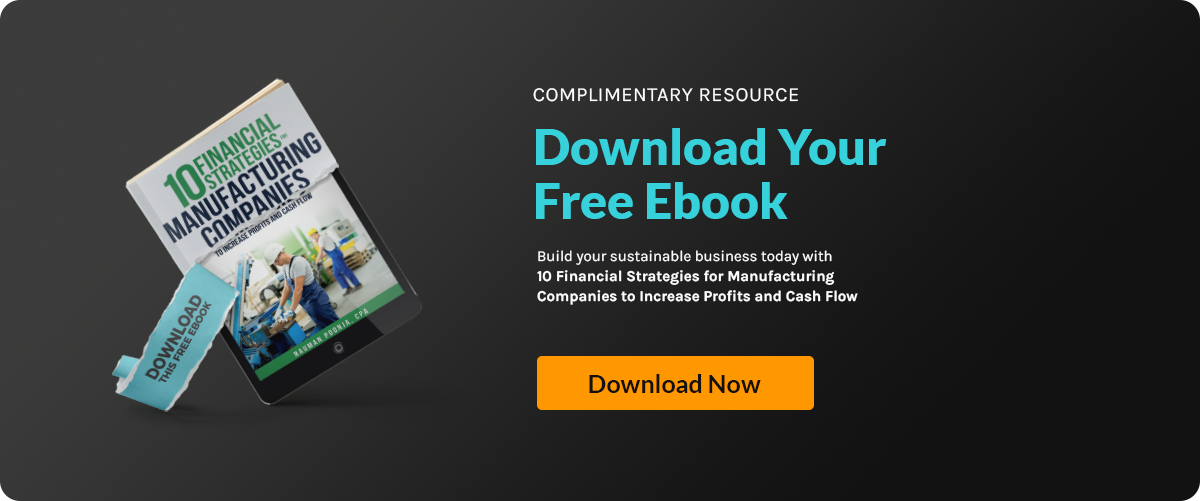How the Accounting Cycle Works: Turning Daily Activity into Financial Clarity

Most founders focus on production, sales, and growth—but the financial side of the business determines how strong that growth truly is. The numbers on a profit and loss statement, balance sheet, or cash flow report do not appear by accident. They are the result of a structured, repeatable process known as the accounting cycle.
Understanding the accounting cycle helps business leaders interpret financial results with confidence, communicate more effectively with investors, and avoid costly mistakes caused by inaccurate reporting. For manufacturing companies and fast-growing startups, this knowledge is especially important because operational activity moves fast. When transactions accumulate without structure, financial statements can become misleading.
This guide explains how financial information moves from everyday transactions to complete, verified financial reports. By understanding this process, founders can build systems that improve decision-making, enhance margin visibility, and support long-term growth.
Why the Accounting Cycle Matters for Founders
The accounting cycle is the backbone of clean, dependable financial reporting. When each stage of the cycle is executed consistently, the numbers you rely on to run your company are trustworthy. When the process is weak, your reports may show profits that don’t exist, cash flow you don’t have, or inventory that isn’t really available.
This affects:
- Pricing decisions
- Hiring plans
- Expansion strategy
- Capital allocation
- Profitability measurement
Sound financial reporting is foundational to strategic growth. Strong accounting processes support transparency and operational alignment, similar to how a structured financial management control process improves accountability across departments.
The Goal of the Accounting Cycle
The purpose of the accounting cycle is simple:
To transform raw business activity into accurate, usable financial statements.
This means recording transactions, organizing them logically, making adjustments, reviewing for accuracy, and presenting the financial story of the business.
The cycle resets every reporting period—usually monthly, quarterly, and annually.

The Stages of the Accounting Cycle
Here is how financial data moves through your company:
| Stage | Purpose | Output |
|---|---|---|
| 1. Transaction occurs | Business activity takes place | Source documents (invoices, receipts, etc.) |
| 2. Record the transaction | Data is entered into the accounting system | Journal entry |
| 3. Post to ledger accounts | Categorization for reporting | Updated account balances |
| 4. Prepare an unadjusted trial balance | Check for balance accuracy | Preliminary financial totals |
| 5. Record adjusting entries | Correct timing and classification | Accurate period expenses and revenue |
| 6. Prepare adjusted trial balance | Confirm accuracy after adjustments | Finalized balances |
| 7. Generate financial statements | Convert data into reports | P&L, balance sheet, cash flow statement |
| 8. Close the books | Reset revenue and expense accounts | Ready for next period |
Each stage builds on the previous one. Accuracy depends on consistency.
Stage 1: Transactions Occur
Every business activity that affects finances is considered a transaction. For manufacturers, this includes:
-
Purchasing raw materials
-
Paying wages
-
Recording machine maintenance
-
Selling finished products
-
Paying vendors
-
Receiving customer payments
Good documentation is essential. If details are recorded late or lost, your reporting will be distorted before the cycle even begins.
Stage 2: Recording Transactions in the Journal
Once a transaction occurs, it must be recorded. Under accrual accounting—which aligns with GAAP requirements- expenses and revenue are recorded when earned or incurred, not when cash moves.
This prevents profit distortion and supports reliable performance evaluation.
A structured chart of accounts ensures every transaction is categorized correctly. Founders managing manufacturing operations can benefit from guidance in developing a sample chart of accounts for manufacturing to support clarity and consistency.
Stage 3: Posting to the General Ledger
Journal entries are summarized and posted into general ledger accounts, which organize financial data into logical groups like:
- Cash
- Accounts Receivable
- Inventory
- Equipment
- Accounts Payable
- Revenue
- Cost of Goods Sold
- Operating Expenses
This structure later informs financial statements.
For manufacturers, having separate accounts for overhead, labor, and production costs supports better cost analysis and margin tracking.
Stage 4: Preparing the Unadjusted Trial Balance
The unadjusted trial balance compiles the balances of all ledger accounts to verify that total debits equal total credits. At this stage, errors become visible, such as:
- Transposed numbers
- Duplicate entries
- Missing entries
This step provides the first system check on the accuracy of recorded transactions.
Stage 5: Recording Adjusting Entries
Adjusting entries ensure financial statements reflect the correct reporting period. These adjustments align with accrual accounting standards.
Common adjustments include:
- Depreciation on equipment
- Accrued payroll
- Inventory adjustments
- Prepaid expenses
- Revenue earned but not invoiced
This stage is essential for accurate reporting. For example, depreciation affects margin visibility and long-term planning, aligning with thoughtful capital allocation strategies such as those discussed in strategic capital allocation for impact in manufacturing.
Stage 6: Adjusted Trial Balance
Once adjusting entries are recorded, an adjusted trial balance confirms that debits still equal credits. This version forms the basis for preparing financial statements.
Stage 7: Preparing Financial Statements
The accounting cycle culminates in the creation of three core financial statements:
| Statement | What It Shows | Guides Decisions On |
|---|---|---|
| Profit and Loss (P&L) | Revenue, COGS, operating expenses, profit | Pricing, cost efficiency, margin control |
| Balance Sheet | Assets, liabilities, and equity | Liquidity, leverage, asset management |
| Cash Flow Statement | Cash inflows and outflows | Cash planning and sustainability |
A strong understanding of how to read these reports is essential. Many founders rely heavily on the P&L while overlooking the balance sheet and cash flow statement, but each document provides different strategic insight.
Manufacturers especially benefit from knowing how to understand your profit and loss statement and how operational activity translates into margins and cash flow.
Stage 8: Closing the Books
Closing the books resets temporary accounts (revenue and expenses) so the next reporting period begins fresh. This ensures profit from one period does not roll into another.
This is where accounting teams finalize reports and prepare them for review, audit, or investor presentation. A clear and structured close supports audit readiness, aligning with practices in a strong financial auditing process.
Improving the Accounting Cycle Through Automation
Manual accounting increases the likelihood of:
- Delayed entries
- Misclassified expenses
- Missing accruals
- Inaccurate reporting
Modern accounting and ERP tools automate posting, reconciliation, and reporting workflows. This improves speed and accuracy, creating real-time visibility into financial performance—especially valuable in manufacturing environments where production and inventory move constantly.
Integrating automation follows the same reasoning discussed in how accounting automation improves manufacturing finance, allowing founders to make faster and more informed financial decisions.
Where FP&A Connects to the Accounting Cycle
While accounting records the past, FP&A (Financial Planning & Analysis) projects the future. Once financial statements are finalized, FP&A uses that data to:
- Model scenarios
- Evaluate profitability
- Plan budgets
- Support growth strategies
This bridges daily operations to long-term strategic decisions, as described in what is FP&A and why every growing company needs it.
Common Mistakes Founders Should Avoid
- Relying only on cash basis data for decision-making
- Skipping month-end review and reconciliation
- Not recording accrued expenses, causing distorted margins
- Lumping production costs into general expense categories
- Closing the books late, leading to outdated reporting
- Not separating management and financial accounting needs
These errors make financial reporting reactive, rather than strategic.
The Accounting Cycle as a Strategic Advantage
When executed consistently, the accounting cycle creates:
- Accurate financial statements
- Clear margin visibility
- Reliable cash flow insights
- Better inventory costing
- Improved investor confidence
Strong financial infrastructure supports long-term scalability and sustainable growth.
A strong accounting cycle doesn’t just keep your books clean—it gives you visibility, control, and confidence. When your financial data is recorded accurately and consistently, every decision you make becomes stronger. Whether you’re evaluating pricing, planning production, negotiating with suppliers, or preparing for growth, clear financial reporting ensures you’re operating from truth rather than guesswork. For founders building something lasting, reliable financial systems aren’t a back-office function—they are a strategic advantage.
Want financial reporting you can trust every month—not just at tax time?
Contact Accounovation to build financial systems that support clarity, growth, and confident decision-making.






